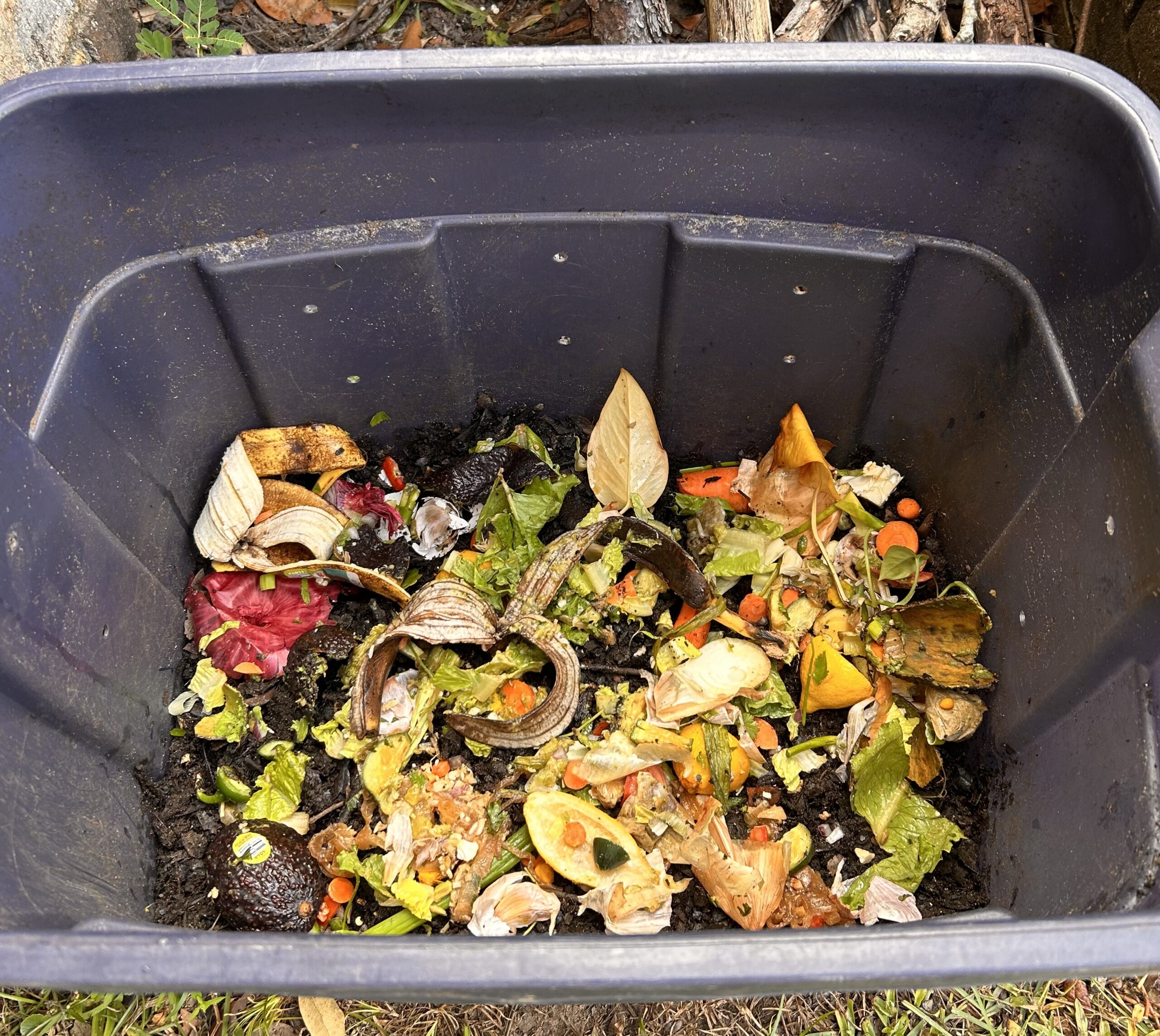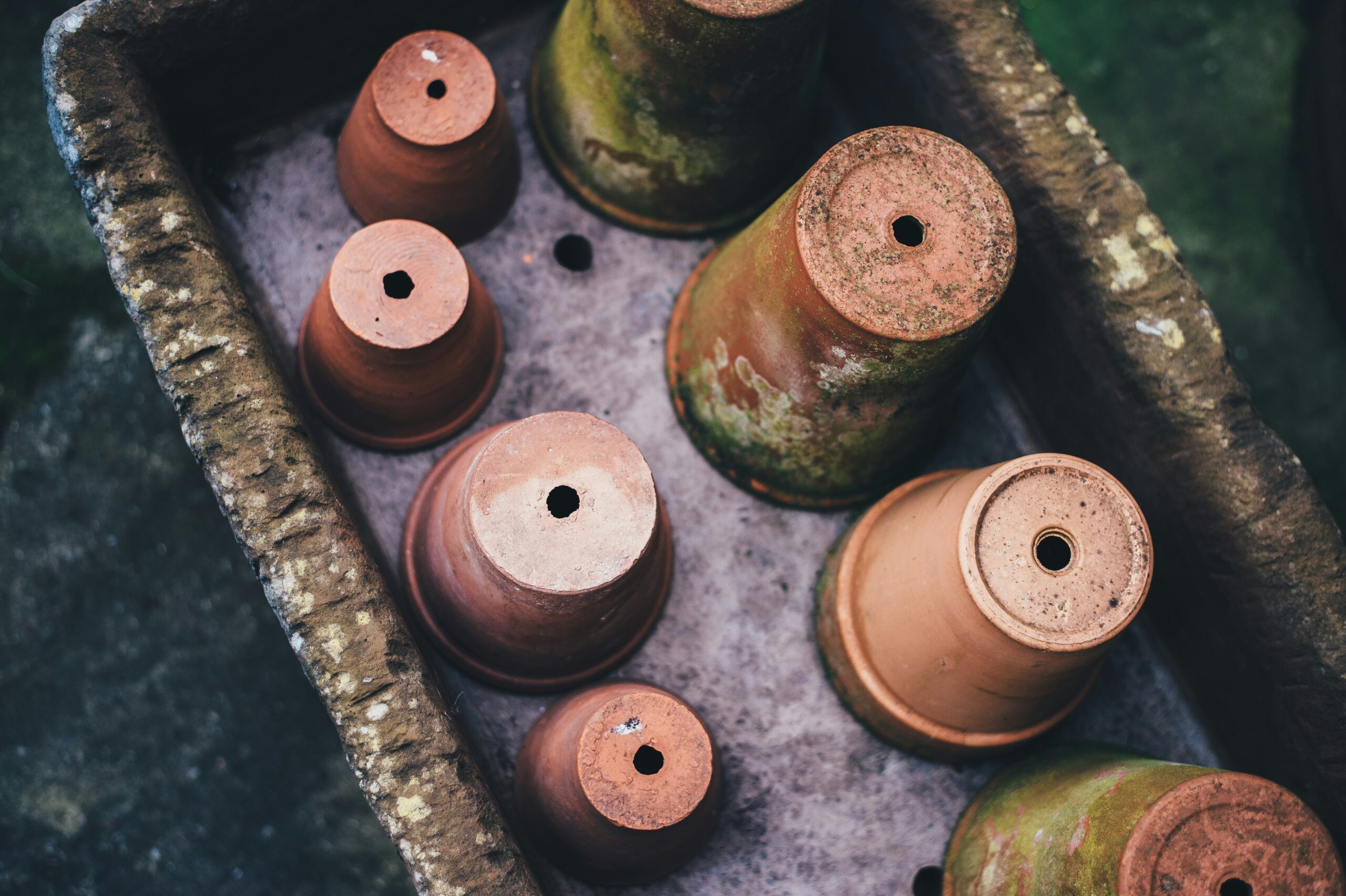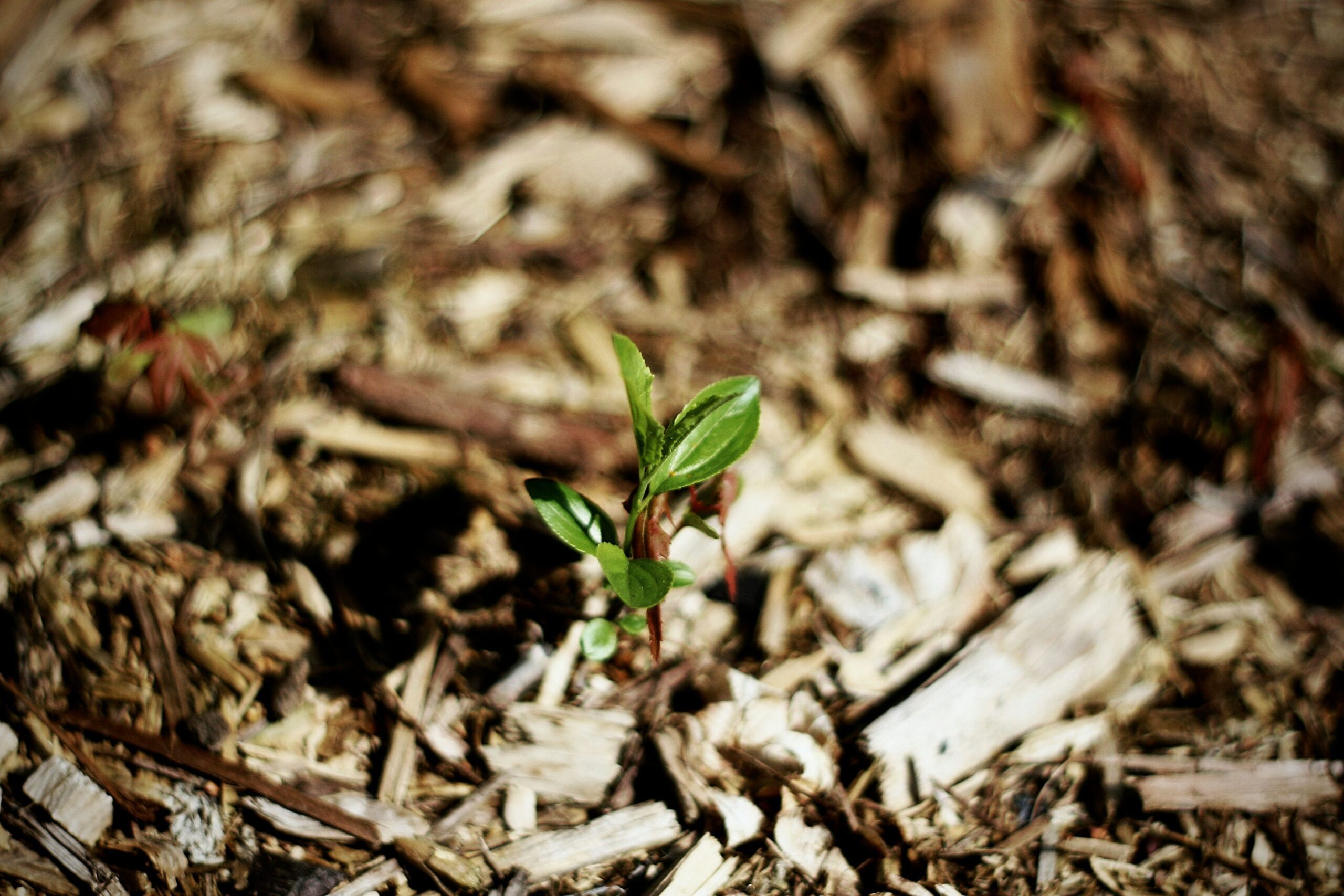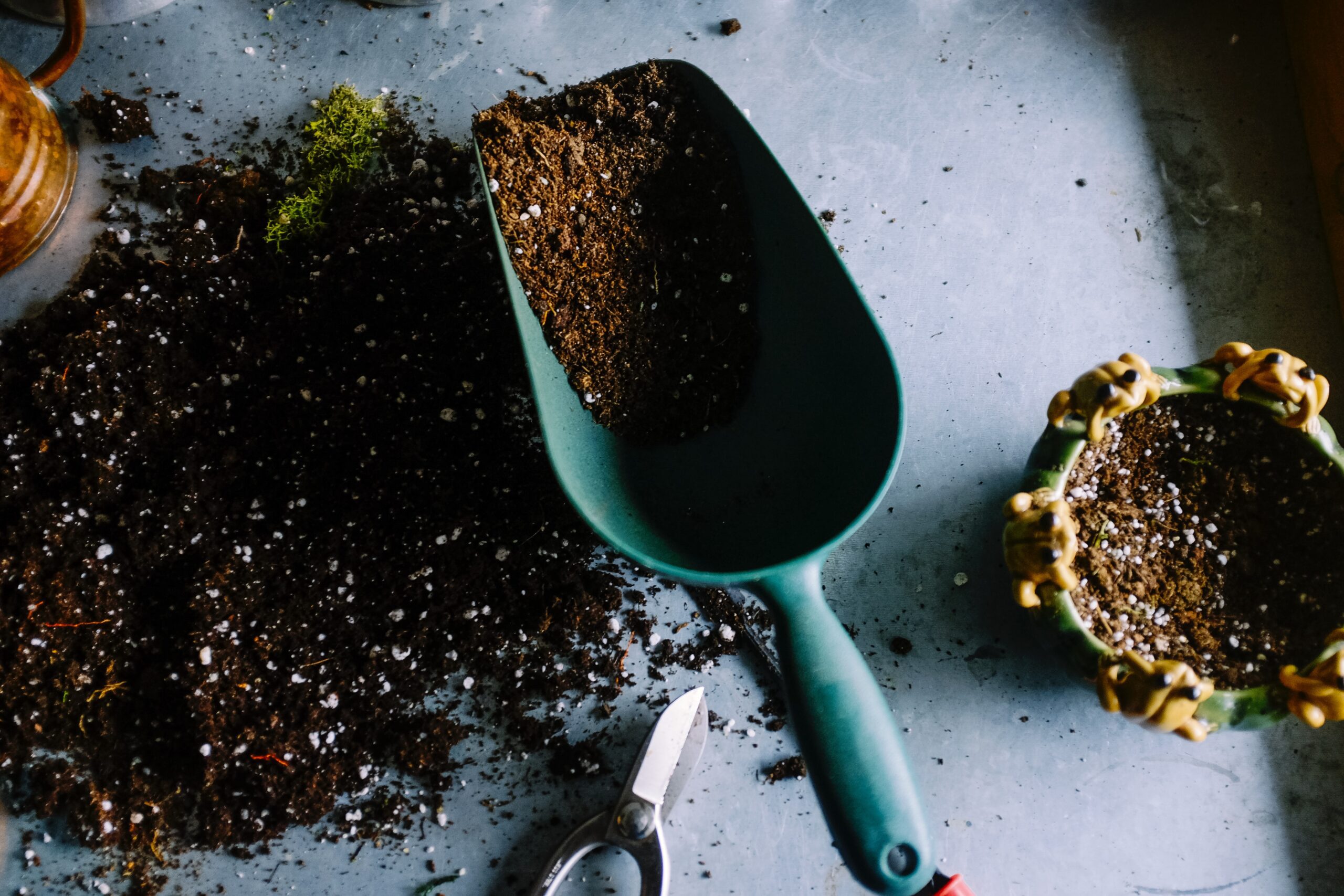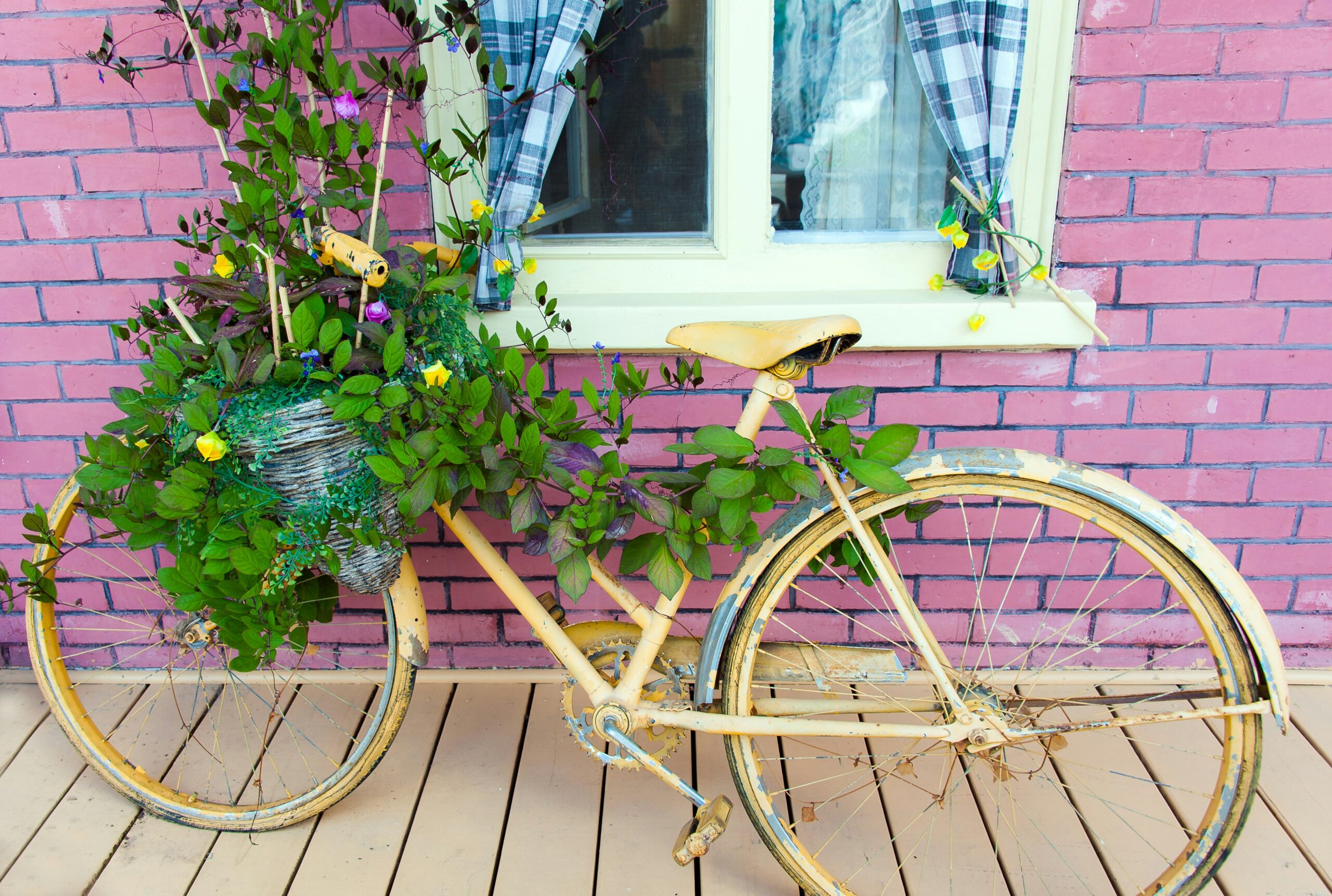If you like to work smarter and not harder, this is the tutorial for you. Simple enough for those who aren’t into DIY projects, using a storage tote to compost is the easy AND frugal option!
Composting has major benefits for the environment. It lessens waste going to landfills, which in turn, lessens gas emissions into the environment. You won’t be able to recycle all your food waste at once but it’s a great first step at becoming more sustainable.
I like using compost better than liquid fertilizer anyway since I don’t have to worry about one ingredient being too strong and harming my plants!
If you can embrace your inner DIY, this simple method will show you how to compost using a storage bin with the least amount of money, time, and energy spent.
Ready? Let’s get started!
How to Compost Using a Storage Bin
Materials
- storage bin with a lid
- drill and drill bits
- sticks + twigs (optional)
- paper, cardboard, or leaves
- food scraps
- foil pan for drainage
1. Prepare Your Container
Start by drilling about 10 holes on each side of your container and the lid for ventilation and drainage. I used a 1/4 drill bit size. This is for a 20-gallon storage tote but feel free to get any size that is right for you. I found this tote for $5 at a thrift store near me.
2. Add Sticks, Twigs, and Bark
Add a layer of sticks, mulch, or old potting soil to the bottom of your container. This will help to filter air circulation through the container and provide drainage.
The sticks will decompose over time. If you’re living in an apartment and you don’t have access to organic yard materials, no worries!
You can skip this step.
3. Add Your “Greens”
Toss in your green layer of food scraps. I used an expired salad. Then add in two more layers of paper products. Every time you add a single layer of “green” (food scraps), you should also add a DOUBLE layer of “brown” (paper, leaves, or cardboard). This helps keep any smells or odors trapped.
Tip: Cut and freeze food scraps before adding them to compost.
Freezing helps rupture cellular plant walls for faster decomposition!
4. Add Your “Browns”
Once you have a bottom layer of sticks, add your first layer of “browns” or paper materials.
I used leaves from a tree in my yard. But you can also substitute browns with any paper product.
“Browns” include paper materials newspapers, cardboard, junk mail or bills, toilet paper rolls, etc. If using cardboard, soak it in water to make it more pliable.
5. Store On a Balcony or Ground Area
Store your containers in an elevated spot close to your garden. The most ideal place would be in the sun. If you’re on a balcony, place the tote on bricks to make sure air is flowing underneath the container. Place your foil tray underneath to catch excess liquid. I chose to leave mine on the ground for critters to help the process along, but if storing on a balcony, be sure to prop your bin on bricks or something that will allow air to circulate underneath. You’ll also want to put a foil pan underneath to catch any juices for compost tea!
6. Keep the Process Going

Now that you have your compost, keep the system going!
Turn your compost pile every few days.
Continue to add in food scraps and paper every few days until things start to break down and the pile is completely decomposed. Once it’s completed, harvest the decomposed remains from your first container and start the process over!
It helps to have two containers going so you can harvest from one bin as you wait for the process to finish in the other. Use Your Compost
A full compost can take up to 6 weeks, depending on conditions. You’ll know the process is done when what used to be paper and food scraps, now looks similar to soil. This is what gardeners call “black gold,” and is full of rich nutrients! With proper storage, finished compost will last you for over a year.
Items You Should Compost
Here’s a list of approved and common items to compost. Browns will include your paper materials while greens refer to your organic materials.
- Paper
- Tea bags
- Eggshells
- Food scraps
- Fruit and veggie skin peels
- Coffee filters/grounds
- Paper towels/toilet paper rolls/tissues
- Hair
- Old expired, moldy, fruits and vegetables
Items You Should NOT Compost
Anything organic can be composted but since most people are sharing a communal space, we don’t want to create odor or attract rodents and pests.
Here are things you should NOT compost:
- Meat
- Bones
- Dairy
- Pet feces
- Chemicals
- Plastics
- Citrus
Compost Problems + Solutions
Nothing is breaking down. You need more nitrogen or more moisture. Add more food scraps or spray your bin with a water bottle, turn your pile, and mix well.
My bin stinks and there are bugs everywhere! Your bin should never stink. In fact, the pile should smell rich and earthy, similar to the outside. Smells or a pest infestation mean an off-balance of food scraps. Add more “browns”. And remember to always bury food scraps under a couple of layers of paper or leaves to trap odors!
What is the Best Way to Use Finished Compost?
- Create your own potting soil/mix – Save money by creating your own soil or mix. Compost is naturally high in organic matter and a main component of a potting mix!
- Use as a slow-release natural fertilizer – No need to go to the store for a high nitrogen or potassium fertilizer. Sprinkle compost on the top layer of your plants to give them an extra boost of nutrients.
- Add to the top layer of soil as mulch – Adding thick layers of compost as mulch can help keep plants cool and prevent moisture from escaping the soil on those intense summer days!
- Gift it to community gardeners – Sustainability and organic gardeners are always looking for ways to increase their yields. There also may be programs near you that participate in local pick-ups.
- Spread it over your lawn – Your native plants and eco-systems will thank you!
- Prepare your garden bed – Help kill weeds and amend your soil for the next season!
